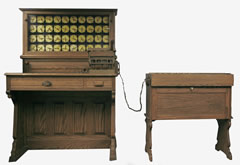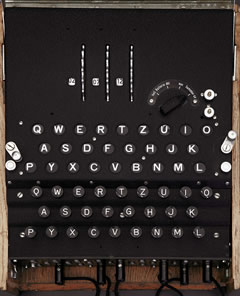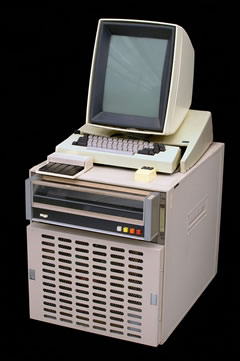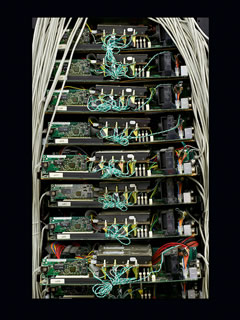Below is a selection of items from the Computer History Museum in Mountain View, California, where U of T grad Dag Spicer (BA 1993 TRIN, MA 1995), is senior curator (see Computer Whiz).
| Antikythera Mechanism (150–100 BC): The multiply geared machine, dredged up from the depths of the Aegean Sea at the turn of the 20th century, helped the ancient Greeks predict the location of the planets and moon and the timing of eclipses – making it the earliest known astronomical calculator. |
 Hollerith Electric Tabulating System (1889): Herman Hollerith’s machine won a contest to tabulate the 1890 U.S. census, using punch cards. His patents eventually became the basis of IBM’s business, and the company made punch cards a central element of computing up to the early 1980s. Hollerith Electric Tabulating System (1889): Herman Hollerith’s machine won a contest to tabulate the 1890 U.S. census, using punch cards. His patents eventually became the basis of IBM’s business, and the company made punch cards a central element of computing up to the early 1980s.
|
 Enigma Machine (1928): It was used by the Nazis to send secret messages during the Second World War – secret until British intellectuals used Polish intelligence and a computing device named the Bombe to break the code. Encrypting and decrypting technology remains relevant for sensitive emails. |
 Xerox Alto (1973). The personal computer as we know it grew from a model Xerox – it had the first mouse, rudimentary email and whatyou- see-is-what-you-get laser printing. Xerox Alto (1973). The personal computer as we know it grew from a model Xerox – it had the first mouse, rudimentary email and whatyou- see-is-what-you-get laser printing.
|
 Google Server Rack (1999). With a company founded in their garage, Google founders Larry Page and Sergey Brin assembled racks of electronics and the software that enabled their search engine to achieve world domination. Google Server Rack (1999). With a company founded in their garage, Google founders Larry Page and Sergey Brin assembled racks of electronics and the software that enabled their search engine to achieve world domination.
|
Recent Posts
U of T’s 197th Birthday Quiz
Test your knowledge of all things U of T in honour of the university’s 197th anniversary on March 15!
Are Cold Plunges Good for You?
Research suggests they are, in three ways
Work Has Changed. So Have the Qualities of Good Leadership
Rapid shifts in everything from technology to employee expectations are pressuring leaders to constantly adapt






